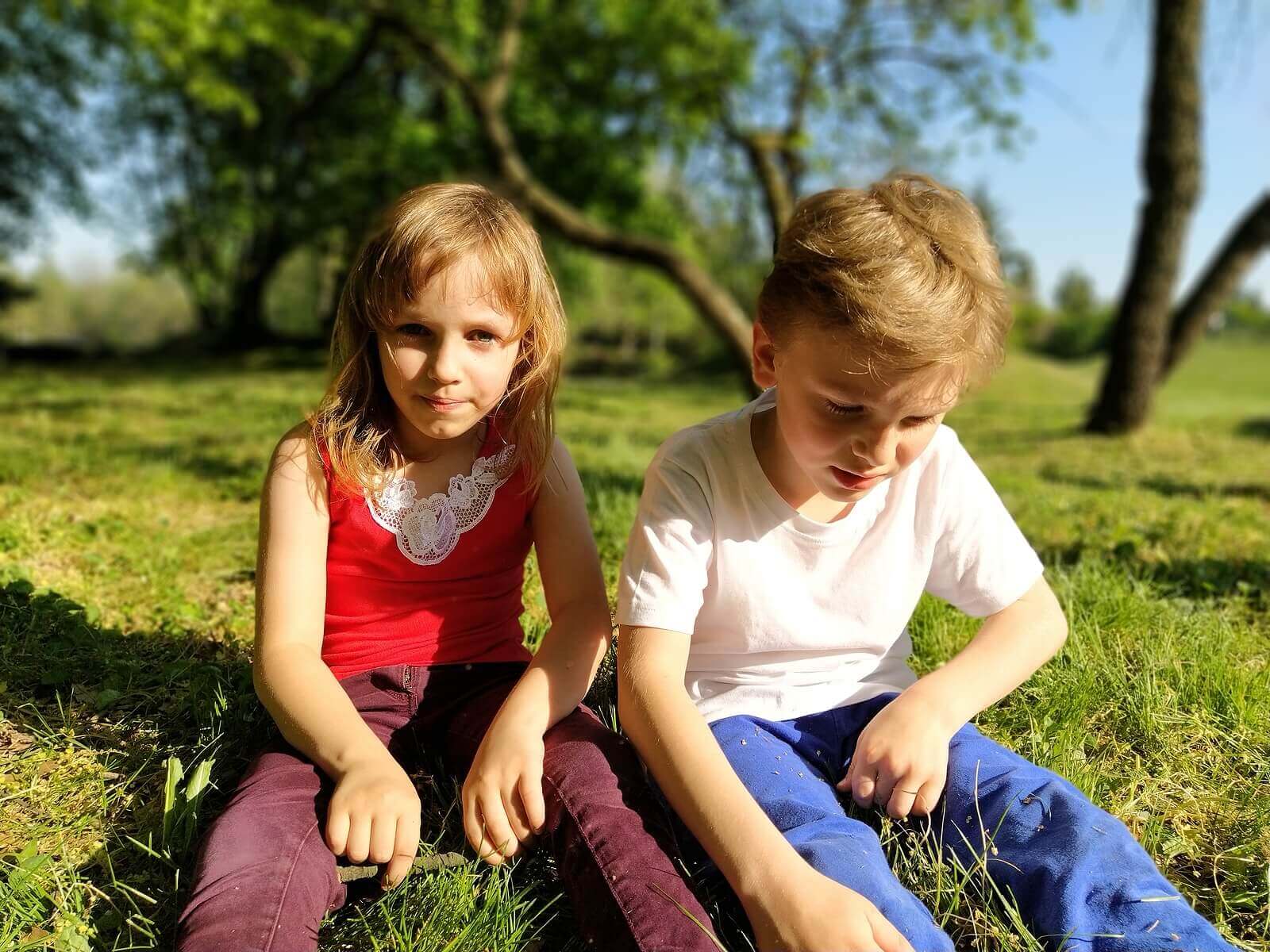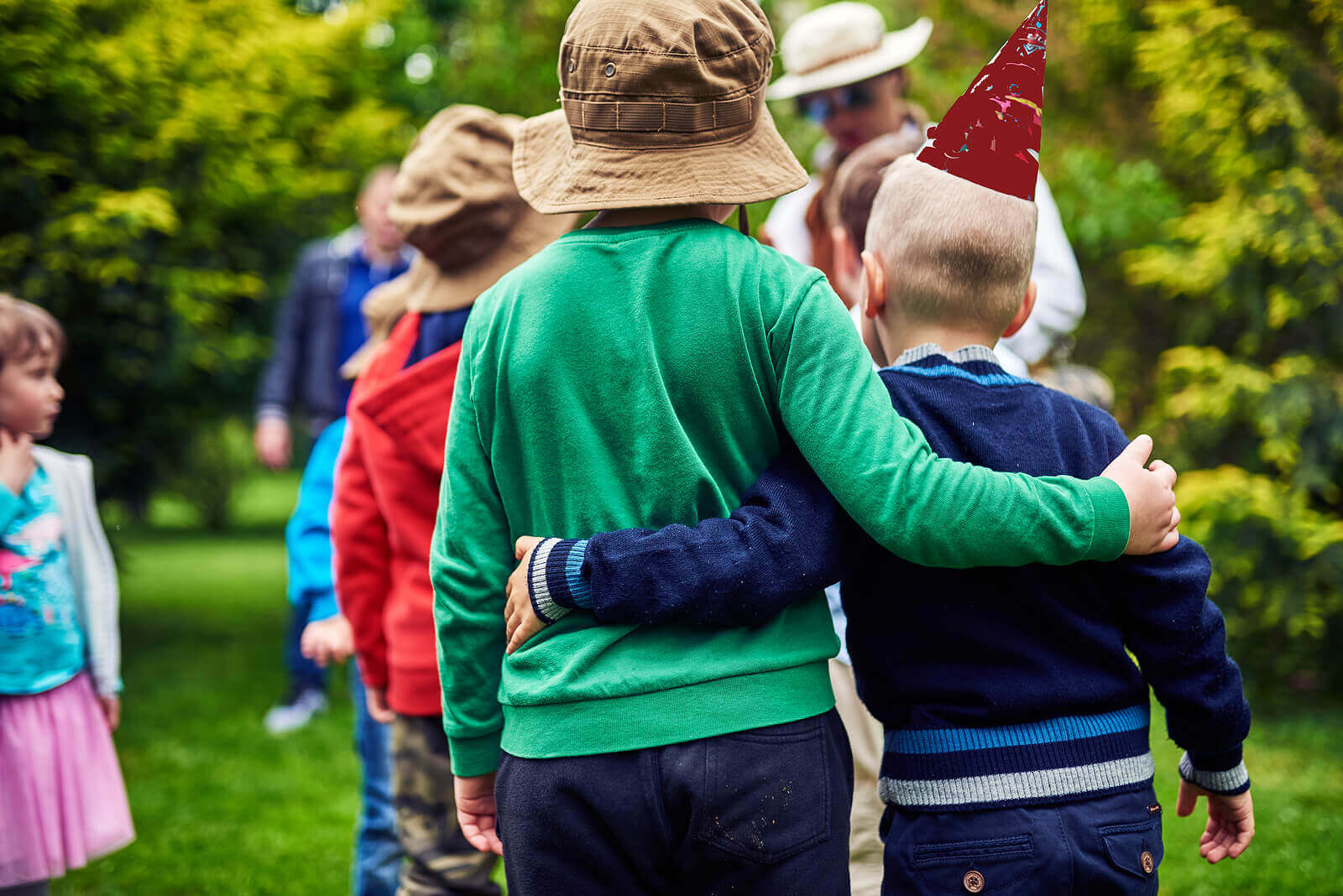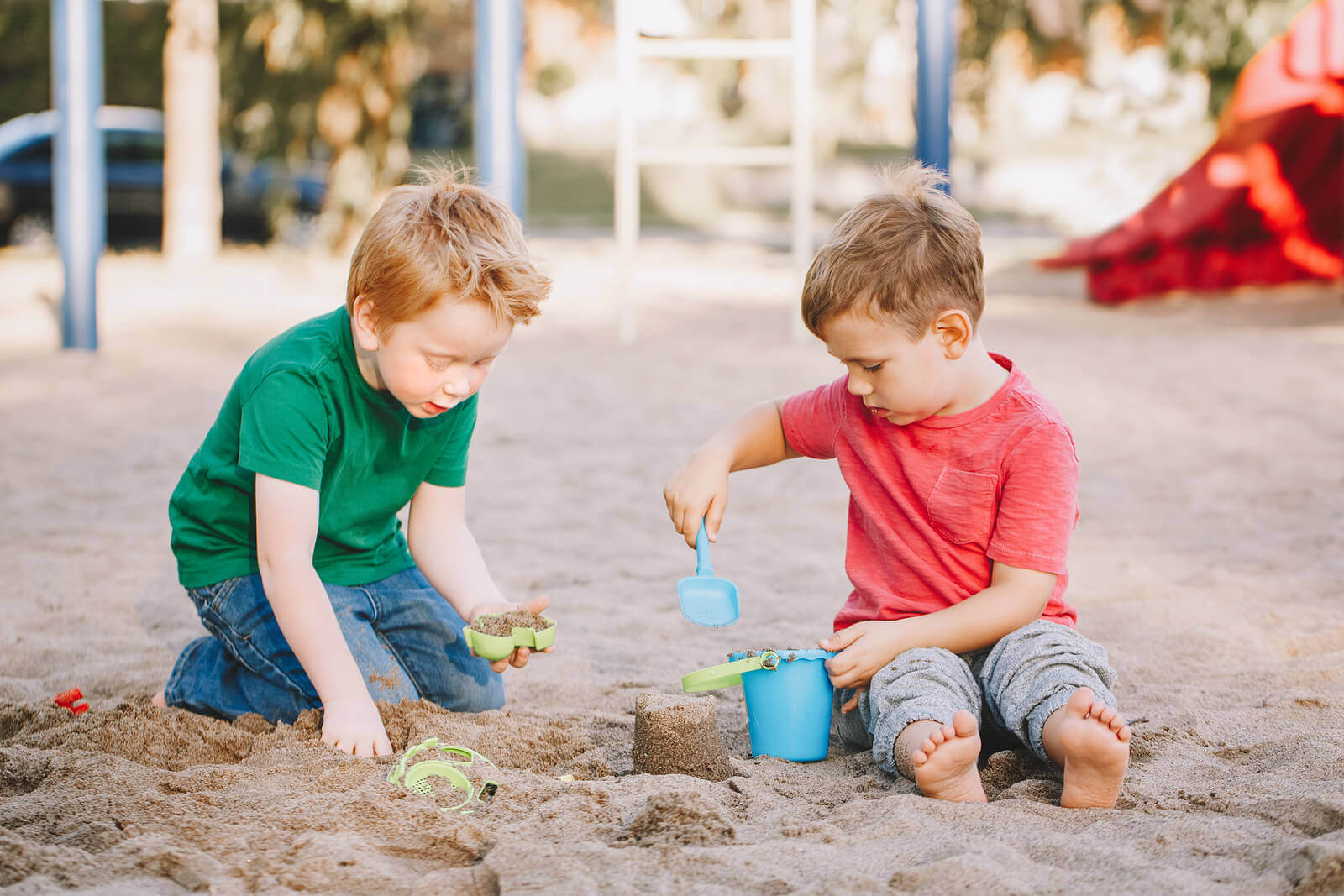The Different Theories that Explain Social Development

There are several different theories that explain social development. These explain how the social environment influences a child’s development on a cognitive, emotional and social level.
From the day we’re born, we’re social beings destined to live in a social world. For that reason, we need other people to develop and evolve.
From the time they’re babies, children grow and develop, becoming who they are through interactions with other people in a continuous process of socialization. In this sense, different factors, like the presence and actions of others, influence little ones; and, in turn, this influences and determines the behavior of others towards them.
There are different theories that explain social development and how interaction with others influences a child’s cognitive, emotional and personal development. Among them, we can mention those of Lev Vigotsky, Erik Erikson and Urie Bronfenbrenner.
Explanatory theories on social development

Socio-cultural theory of Lev Vigotsky
Lev Vigotsky was a Russian psychologist and a precursor of social constructivism. He based his theory on socio-cultural learning, considering the social environment as fundamental for children’s learning. Therefore, learning is the integration of two factors: social and personal.
Vigotsky worked on several concepts in order to understand the social development and learning of children. Below, we’ll look at each of them.
Mental functions
According to Vigotsky, there are two types of mental functions:
- Lower. These are the functions we’re born with, that are innate to us. Therefore, they’re determined biologically.
- Higher. These are the mental functions that we acquire and develop through social interaction.
Psychological skills
In a child’s cultural development, mental functions develop and appear twice. First, they appear on a social level and then on an individual level.
“Every function in the child’s cultural development appears twice: first, on the social level, and later, on the individual level; first, between people (interpsychological) and then inside the child (intrapsychological). This applies equally to voluntary attention, to logical memory, and to the formation of concepts. All the higher functions originate as actual relationships between individuals.”
― Lev S. Vygotsky ―
Zone of proximal development
Vigotsky defined the zone of proximal development (ZDP) as: “The distance between the actual level of development, determined by the ability to independently solve a problem, and the level of potential development, determined through the resolution of a problem under the guidance of an adult or in collaboration with another more capable partner.”
Therefore, the ZDP is the time when learning takes place. It allows children to progressively develop their higher mental functions.
Psychological tools
According to Vigotsky, psychological tools are all those objects that serve to externally organize information. For example, symbols, writing, works of art, drawings, language, etc. Language is considered the most important tool, as it’s the medium through which children communicate with their social environment.
We can say that psychological tools are the bridge between lower and higher mental functions. They mediate our thoughts, feelings and behaviors.
Mediation
When we’re born, we have only inferior metal functions, as the superior ones haven’t developed yet. As little ones interact with others, learning takes place. Thus, children learn through instrumental and social mediators.
However, what we learn depends on the psychological tools that we have. And, in turn, these depend on the culture in which we live. Consequently, our ways of thinking, feeling and acting are culturally mediated.

More explanatory theories on social development
Psychosocial theory of Erik Erikson
Like Vygotsky, Erik Erikson gives special importance to social and cultural aspects in the development of personality. Erikson developed the psychosocial theory. In it, he describes eight stages (conflicts) that occur from childhood to old age. Social interactions influence these stages and each of them presents a new challenge (conflict between social needs and demands) that the person must resolve.
The resolution of the conflict of each stage will lead to the development of new competencies. That being said, each stage will have two possible outcomes:
- On the one hand, the successful completion of each stage results in new competencies and, therefore, a healthy personality and successful interactions with others.
- On the other hand, failure of one stage may result in a reduced ability to complete the other stages. This, in turn, results in a less healthy personality and a sense of personal identity.
Psychosocial stages
- Stage 1. Infancy. Trust versus mistrust (or 18 months).
- Stage 2. Early childhood. Autonomy versus shame and doubt (18 months to 3 years).
- Stage 3. Playing age. Initiative versus guilt (3 to 5)
- Stage 4. Adolescence. Industry versus inferiority (5 to 13 years old)
- Stage 5. Youth. Identity versus role confusion (13 to 21 years old, approximately)
- Stage 6. Maturity. Intimacy versus isolation (21 to 40 years, approximately).
- Stage 7. Adulthood. Generativity versus stagnation (40 to 60 years, approximately).
- Stage 8. Old age: Integrity versus despair (60 years, approximately, until death)
“There is in every child at every stage a new miracle of vigorous unfolding.”
― Erik H. Erikson ―
Ecological theory of Urie Bronfenbrenner
Bronfenbrenner proposes an ecological perspective on the development of human behavior. His theory states that development and learning are products of the interaction of subjects with their environment. For this reason, a child’s environment and all the systems they’re a part of influence their cognitive, moral and relational development.
The ecological environment proposed by Bronfenbrenner is a group of systems with different levels. What’s more, these levels are interconnected; each level contains the other and they depend on each other.

Systems of the ecological theory
- Microsystem. The most internal and immediate environment where the individual develops (family, school, friends…).
- Mesosystem. Comprises the interrelation of two environments or microsystems. Here, the developing person interacts and participates actively (family-school, family-friends…).
- Exosystem. These are environments that don’t include the developing person directly. However, they can affect their environment and, therefore, their development. For example, in the case of a child, it would be their parents’ workplace. The child doesn’t participate in that environment, but it can influence their development in an implicit way (time availability, parental stress…).
- Macrosystem. These are the elements of the culture where the person develops. More specifically, it’s the set of values, religion, traditions, etc, that make up their culture. This level influences how other systems can express themselves.
- Cosmosystem. This has to do with the temporal dimension. According to the moment of life in which the person is living, the events in their environment will affect them in one way or another.
“We as a nation need to be re-educated about the necessary and sufficient conditions for making human beings human. We need to be reeducated not as parents, but as workers, neighbors, and friends; and as members of the organizations, committees, boards – and, especially, the informal networks that control our social institutions and thereby determine the conditions of life for our families and their children.”
― Urie Bronfenbrenner ―
There are several different theories that explain social development. These explain how the social environment influences a child’s development on a cognitive, emotional and social level.
From the day we’re born, we’re social beings destined to live in a social world. For that reason, we need other people to develop and evolve.
From the time they’re babies, children grow and develop, becoming who they are through interactions with other people in a continuous process of socialization. In this sense, different factors, like the presence and actions of others, influence little ones; and, in turn, this influences and determines the behavior of others towards them.
There are different theories that explain social development and how interaction with others influences a child’s cognitive, emotional and personal development. Among them, we can mention those of Lev Vigotsky, Erik Erikson and Urie Bronfenbrenner.
Explanatory theories on social development

Socio-cultural theory of Lev Vigotsky
Lev Vigotsky was a Russian psychologist and a precursor of social constructivism. He based his theory on socio-cultural learning, considering the social environment as fundamental for children’s learning. Therefore, learning is the integration of two factors: social and personal.
Vigotsky worked on several concepts in order to understand the social development and learning of children. Below, we’ll look at each of them.
Mental functions
According to Vigotsky, there are two types of mental functions:
- Lower. These are the functions we’re born with, that are innate to us. Therefore, they’re determined biologically.
- Higher. These are the mental functions that we acquire and develop through social interaction.
Psychological skills
In a child’s cultural development, mental functions develop and appear twice. First, they appear on a social level and then on an individual level.
“Every function in the child’s cultural development appears twice: first, on the social level, and later, on the individual level; first, between people (interpsychological) and then inside the child (intrapsychological). This applies equally to voluntary attention, to logical memory, and to the formation of concepts. All the higher functions originate as actual relationships between individuals.”
― Lev S. Vygotsky ―
Zone of proximal development
Vigotsky defined the zone of proximal development (ZDP) as: “The distance between the actual level of development, determined by the ability to independently solve a problem, and the level of potential development, determined through the resolution of a problem under the guidance of an adult or in collaboration with another more capable partner.”
Therefore, the ZDP is the time when learning takes place. It allows children to progressively develop their higher mental functions.
Psychological tools
According to Vigotsky, psychological tools are all those objects that serve to externally organize information. For example, symbols, writing, works of art, drawings, language, etc. Language is considered the most important tool, as it’s the medium through which children communicate with their social environment.
We can say that psychological tools are the bridge between lower and higher mental functions. They mediate our thoughts, feelings and behaviors.
Mediation
When we’re born, we have only inferior metal functions, as the superior ones haven’t developed yet. As little ones interact with others, learning takes place. Thus, children learn through instrumental and social mediators.
However, what we learn depends on the psychological tools that we have. And, in turn, these depend on the culture in which we live. Consequently, our ways of thinking, feeling and acting are culturally mediated.

More explanatory theories on social development
Psychosocial theory of Erik Erikson
Like Vygotsky, Erik Erikson gives special importance to social and cultural aspects in the development of personality. Erikson developed the psychosocial theory. In it, he describes eight stages (conflicts) that occur from childhood to old age. Social interactions influence these stages and each of them presents a new challenge (conflict between social needs and demands) that the person must resolve.
The resolution of the conflict of each stage will lead to the development of new competencies. That being said, each stage will have two possible outcomes:
- On the one hand, the successful completion of each stage results in new competencies and, therefore, a healthy personality and successful interactions with others.
- On the other hand, failure of one stage may result in a reduced ability to complete the other stages. This, in turn, results in a less healthy personality and a sense of personal identity.
Psychosocial stages
- Stage 1. Infancy. Trust versus mistrust (or 18 months).
- Stage 2. Early childhood. Autonomy versus shame and doubt (18 months to 3 years).
- Stage 3. Playing age. Initiative versus guilt (3 to 5)
- Stage 4. Adolescence. Industry versus inferiority (5 to 13 years old)
- Stage 5. Youth. Identity versus role confusion (13 to 21 years old, approximately)
- Stage 6. Maturity. Intimacy versus isolation (21 to 40 years, approximately).
- Stage 7. Adulthood. Generativity versus stagnation (40 to 60 years, approximately).
- Stage 8. Old age: Integrity versus despair (60 years, approximately, until death)
“There is in every child at every stage a new miracle of vigorous unfolding.”
― Erik H. Erikson ―
Ecological theory of Urie Bronfenbrenner
Bronfenbrenner proposes an ecological perspective on the development of human behavior. His theory states that development and learning are products of the interaction of subjects with their environment. For this reason, a child’s environment and all the systems they’re a part of influence their cognitive, moral and relational development.
The ecological environment proposed by Bronfenbrenner is a group of systems with different levels. What’s more, these levels are interconnected; each level contains the other and they depend on each other.

Systems of the ecological theory
- Microsystem. The most internal and immediate environment where the individual develops (family, school, friends…).
- Mesosystem. Comprises the interrelation of two environments or microsystems. Here, the developing person interacts and participates actively (family-school, family-friends…).
- Exosystem. These are environments that don’t include the developing person directly. However, they can affect their environment and, therefore, their development. For example, in the case of a child, it would be their parents’ workplace. The child doesn’t participate in that environment, but it can influence their development in an implicit way (time availability, parental stress…).
- Macrosystem. These are the elements of the culture where the person develops. More specifically, it’s the set of values, religion, traditions, etc, that make up their culture. This level influences how other systems can express themselves.
- Cosmosystem. This has to do with the temporal dimension. According to the moment of life in which the person is living, the events in their environment will affect them in one way or another.
“We as a nation need to be re-educated about the necessary and sufficient conditions for making human beings human. We need to be reeducated not as parents, but as workers, neighbors, and friends; and as members of the organizations, committees, boards – and, especially, the informal networks that control our social institutions and thereby determine the conditions of life for our families and their children.”
― Urie Bronfenbrenner ―
This text is provided for informational purposes only and does not replace consultation with a professional. If in doubt, consult your specialist.








